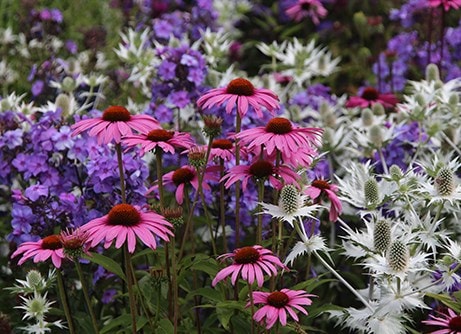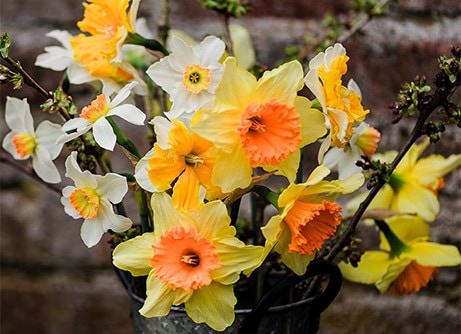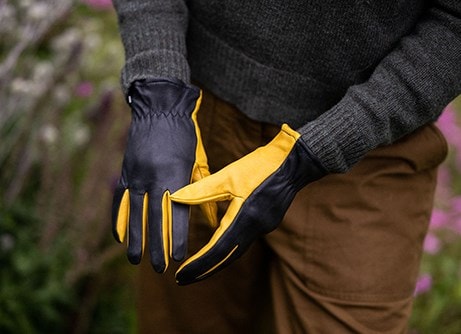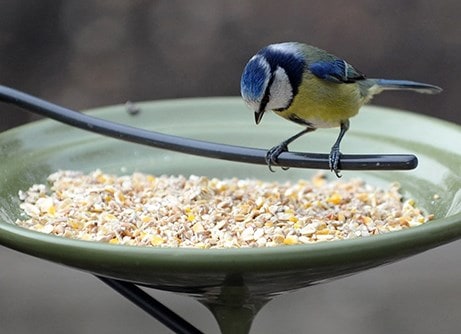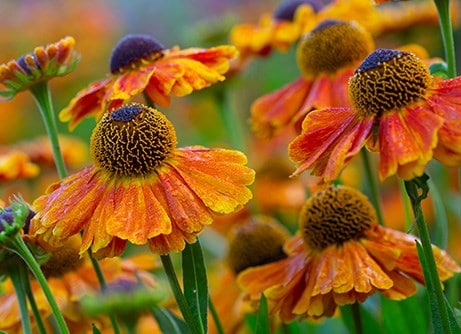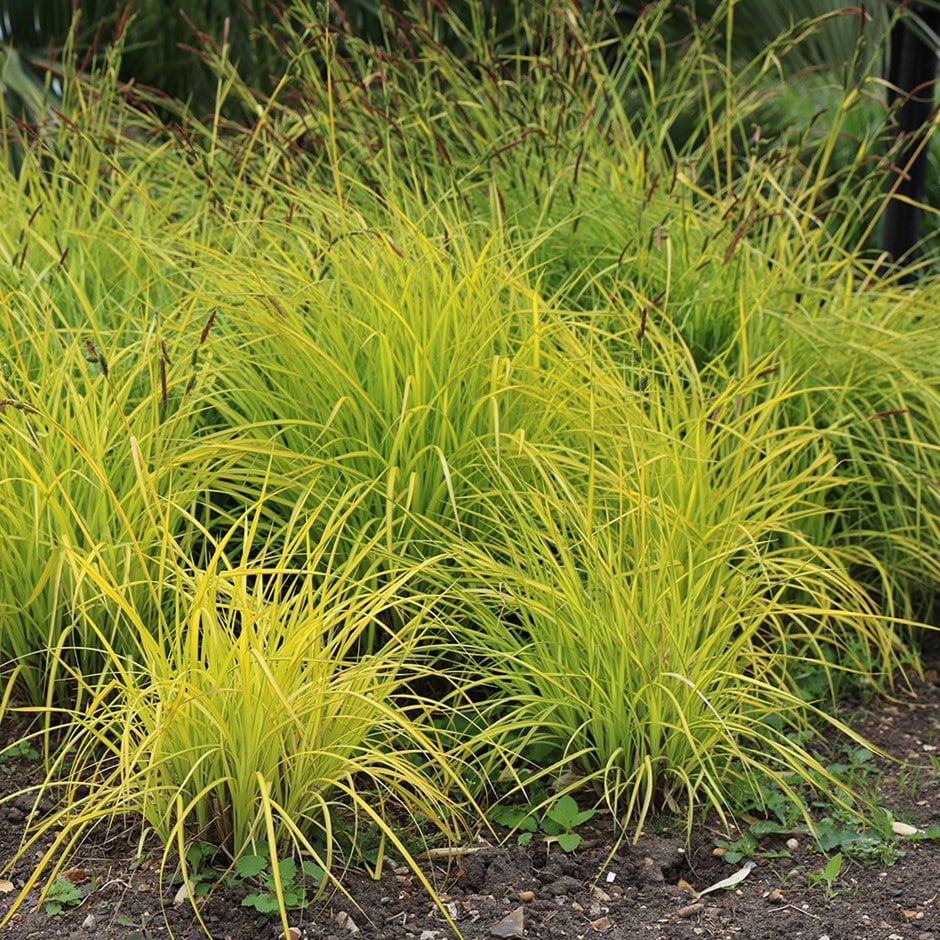
Named after the famous botanist and author, EA Bowles, (who discovered the native species in East Anglia), this gorgeous, semi-evergreen, ornamental grass forms tussocks of rich yellow leaves. It's useful for brightening shady areas, filling gaps in borders, or planting by water, where its fine leaves will offer contrast and textural interest. If it is kept well watered, it will tolerate a spot in bright sun, however the leaf colour is at its best when it's grown in partial shade.
Carex elata 'Aurea' is primarily grown for its attractive foliage, however in early summer, it will also produces long spikes with brown, feathery flowers.
Carex elata 'Aurea' is primarily grown for its attractive foliage, however in early summer, it will also produces long spikes with brown, feathery flowers.
How to care for Carex elata Aurea:
Plant Carex in well-drained soil, ideally enriched with organic matter, and choose a spot in full sun or light shade. Space plants to allow for their mature size and water regularly until established. Feed during the growing season and lift and divide crowded clumps in early spring to maintain vigour.
Most evergreen and semi-evergreen Carex don’t need cutting back in the the traditional sense. Instead, in late winter or early spring, just comb through the plant with your fingers or a rake to remove any dead or tatty foliage. If the plant looks untidy or has suffered winter damage, you can lightly trim back the worst leaves, but avoid hard pruning as it can spoil the natural shape and regrowth is quite slow.
Most evergreen and semi-evergreen Carex don’t need cutting back in the the traditional sense. Instead, in late winter or early spring, just comb through the plant with your fingers or a rake to remove any dead or tatty foliage. If the plant looks untidy or has suffered winter damage, you can lightly trim back the worst leaves, but avoid hard pruning as it can spoil the natural shape and regrowth is quite slow.
Flowering period:
- Jan
- Feb
- Mar
- Apr
- May
- Jun
- Jul
- Aug
- Sep
- Oct
- Nov
- Dec
Eventual height:
0.7m
Eventual spread:
0.45m
Position:
Full sun / light shade
Rate of growth:
Average
Soil:
Moderately fertile, moist, well-drained soil
Hardiness:
Fully hardy
-
This perennial is semi-evergreen so it can lose some of its leaves in winter. In colder regions or more exposed gardens, it may lose them all, but then fresh new growth appears again in spring.
Product options

2 litre pot
was £22.99
now £18.39
In stock
(shipped within 2-3 working days)
(shipped within 2-3 working days)

3 × 2 litre pots
was £54.99
now £43.99
£14.66 each
In stock
(shipped within 2-3 working days)
(shipped within 2-3 working days)
1
Delivery options (pick your preferred option at checkout)
Standard Delivery£5.99
Named Day Delivery£10.99
Goes well with
Cornus sanguinea 'Midwinter Fire'
midwinter fire dogwood
From £9.99
View options
| 2 litre pot | £22.99 |
|
| 12 litre pot | 80 - 100cm tall | £89.99 |
|
| 3 × 2 litre pots | £57.99 |
|
| 12 litre pot | 60 - 80cm tall | £59.99 |
|
| 9cm pot | £9.99 |
|
| 3 × 9cm pots | £20.99 |
|
View details
Osmunda regalis
royal fern
From £10.99
View options
| 2 litre pot | £19.99 |
|
| 3 × 2 litre pots | £44.99 |
|
| 9cm pot | £10.99 |
|
| 3 × 9cm pots | £19.79 |
|
View details
Glazed ceramic planter - deep blue
From £39.99
View options
| large Ø50 × H38.5cm | £124.99 |
|
|
| medium Ø40 × H32cm | £54.99 |
|
|
| small Ø31 × H24cm | £39.99 |
|
View details

